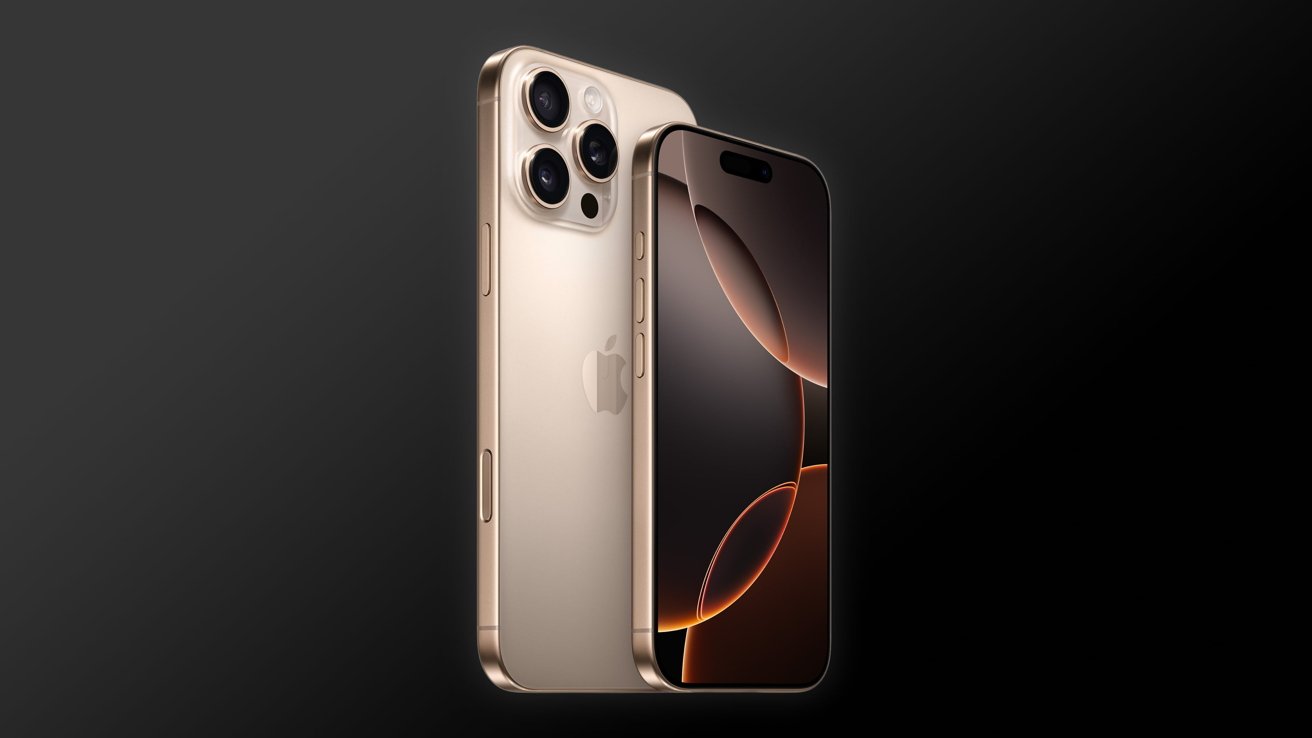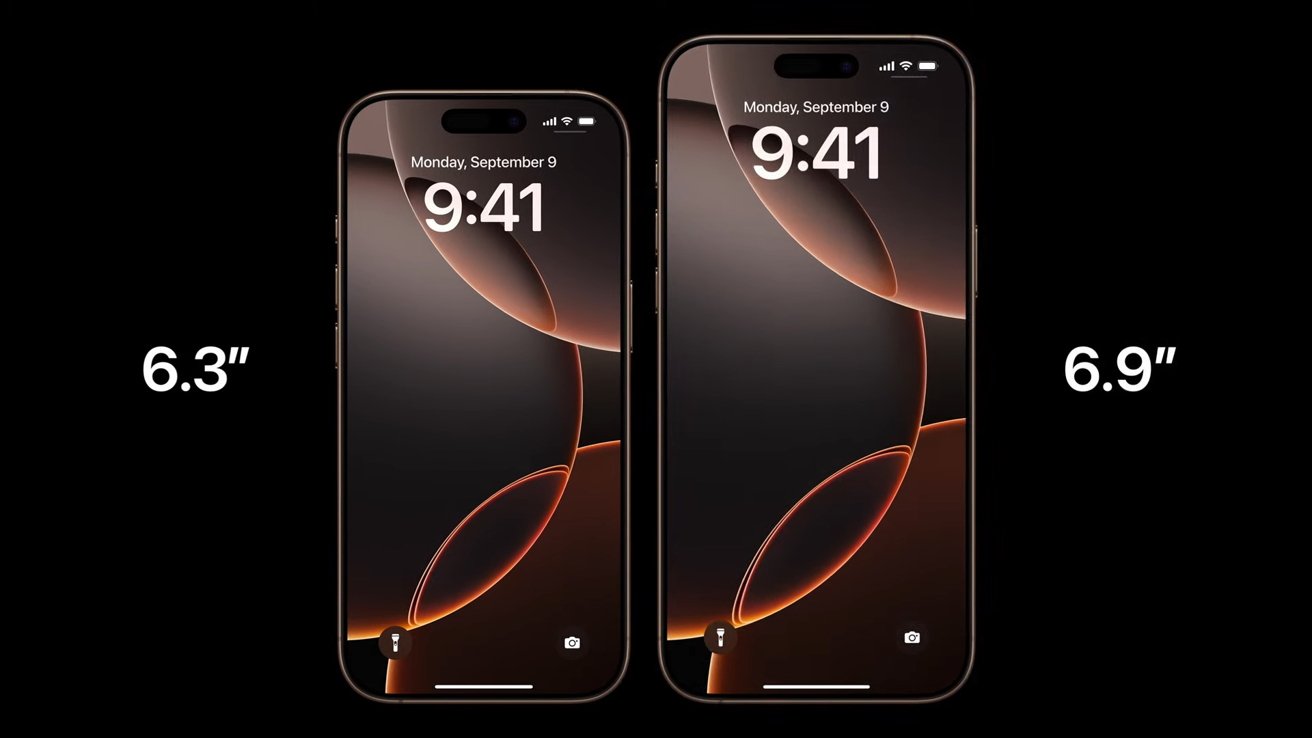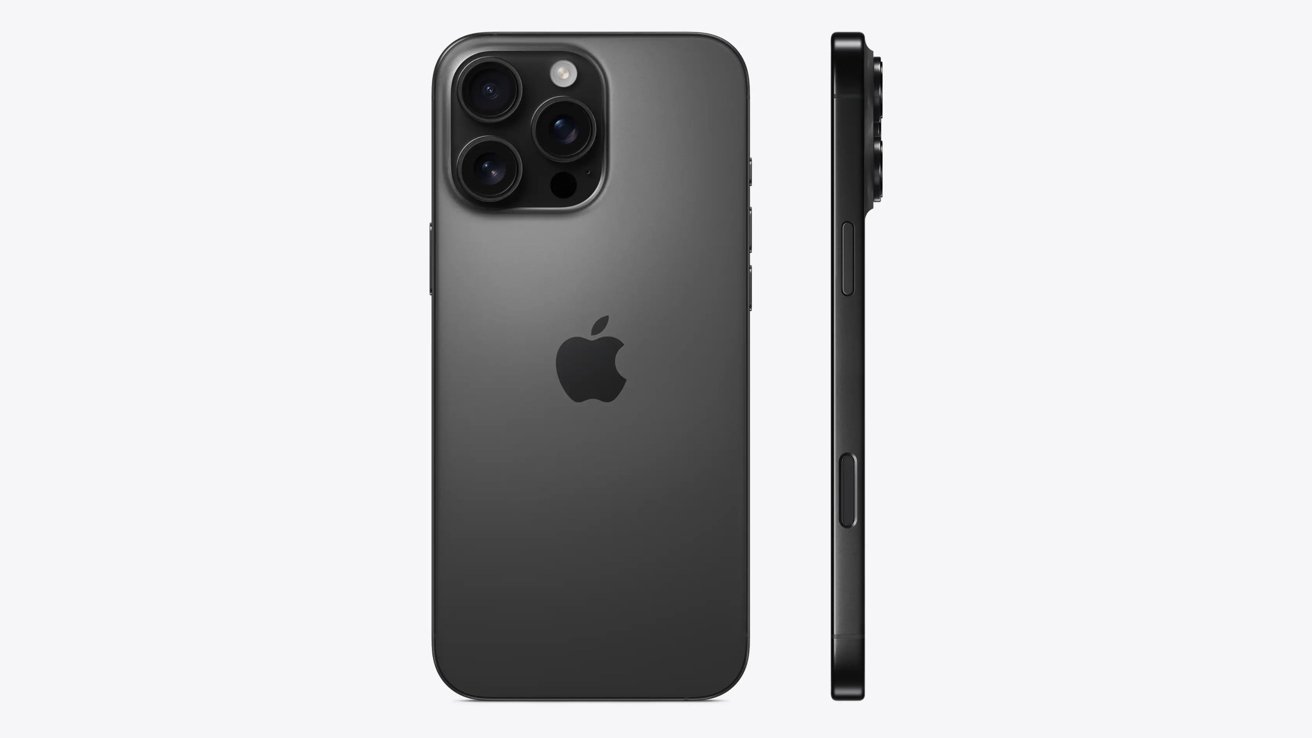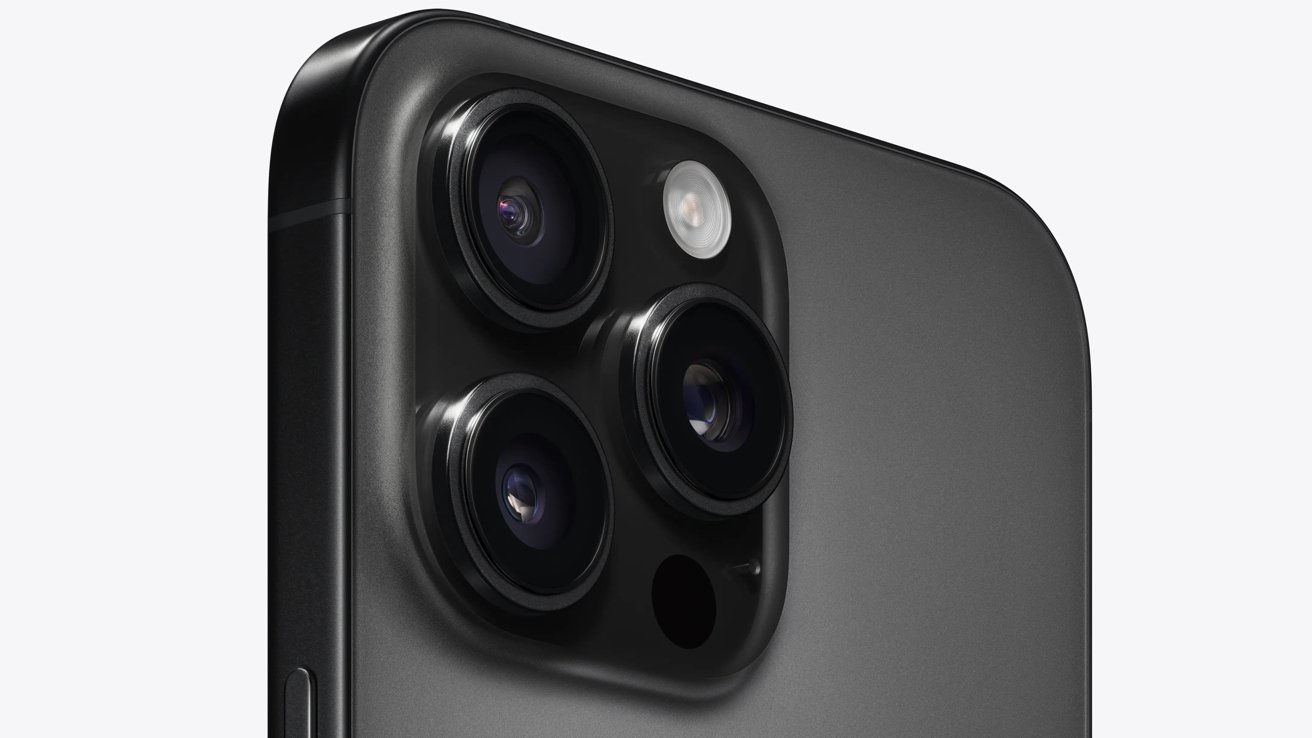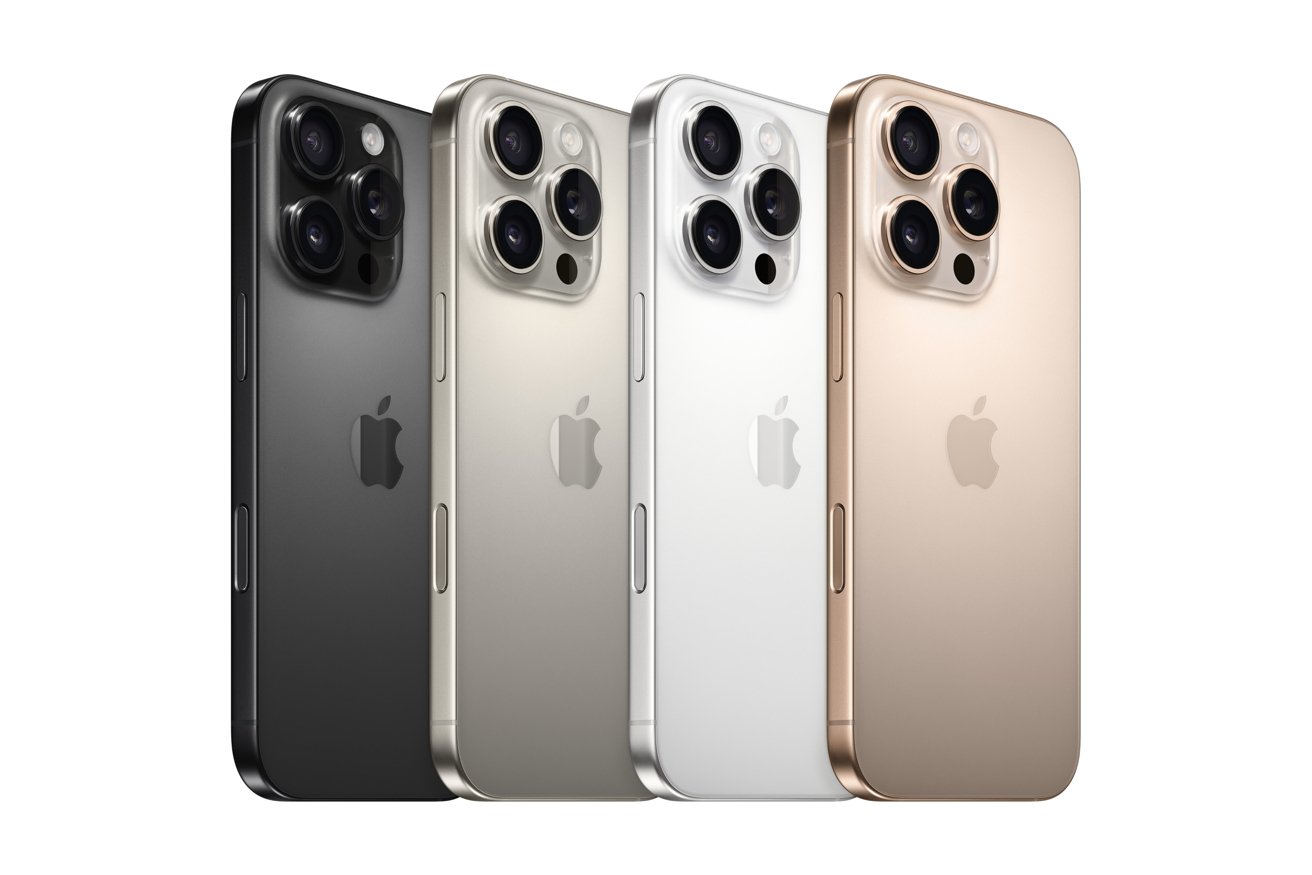Apple has used its “Glowtime” special event to launch the iPhone 16 Pro and iPhone 16 Pro Max, this time with bigger screens, hugely faster performance, and the Camera Control button.
Just as usual, Apple has brought out two tiers of Pro-grade iPhone for consumers. The iPhone 16 Pro is joined by a larger counterpart, the iPhone 16 Pro Max.
For the most part, the two models are practically the same, save for their sizes. The iPhone 16 Pro is a bit larger this year with a 6.3-inch screen, while the Pro Max has grown from 6.7 inches to 6.9 inches.
These larger screens are also equipped with even thinner bezels. A new machined chassis combined with a graphite-clad substructure to help thermally manage the iPhone.
The Super Retina XDR displays are OLED, with support for HDR, True Tone, ProMotion, and P3 color. With a 2-million-to-1 contrast ratio, the panels can output up to 2,000 nits of brightness when used outdoors.
The new 6.3-inch screen has a resolution of 2,622 by 1,206, while the 6.9-inch is 2,868 by 1,320. This equates to a pixel density of 460ppi apiece.
At the top is the punch hole camera, hidden by the Dynamic Island UI elements. It contains a 12MP TrueDepth Camera array, which is also used for Face ID.
Continuing the trend from the iPhone 15 Pro line, the Action Button makes a return as the switch replacement, but it’s not alone.
The Camera Control button is capacitive, which offers a new way to launch and control the camera. Aside from pressing to shoot, users can slide their finger to adjust the zoom level.
A18 Pro
Inside the iPhone 16 Pro models is the A18 Pro, an upgrade to the previous generation’s A17 Pro chip. Made using a 3-nanometer process, the chip promises to be 15% faster with its six-core CPU with two performance cores and four efficiency cores, but using 20% less power.
The A18 Pro also uses a six-core GPU, this time being 20% faster than the A17 Pro, and with 2 times faster ray tracking. It’s also equipped with 8GB of memory and a new 16-core Neural Engine, which has a 17% increase in memory bandwidth.
This change will certainly be beneficial to consumers, as this will be the second pro-tier iPhone to support Apple Intelligence. A larger Neural Engine will aid it with its onboard processing.
There’s also a new image signal process and video decoder, which are twice as fast as their A17 Pro counterparts.
Rear Cameras and Video
Around the back is the usual trio of cameras in a square bump. The Main camera, renamed to a Fusion camera continues to have a 48MP sensor, which can shoot 24MP photos using pixel binning, and can offer a virtual 2x camera simply by cropping the sensor.
The Ultra Wide now has an upgraded sensor to the same resolution, which can further benefit macro photography.
The Telephoto camera is still using a 12MP sensor, but Apple did make a bit of an upgrade here. While the iPhone 15 Pro Max used the Tetraprism lens, both Pro models have it this time, resulting in a 5x telephoto optical zoom.
On the video side, the already-impressive video capabilities have been expanded, with the camera now capable of 4K 120fps video. This includes ProRes footage recorded to external hard drives.
That 120fps 4K footage can also have its playback speed adjusted after capture in the Photos app.
A major update is in audio processing, as it uses four mics with a new lower noise floor. There’s also Spatial Audio capture for video recording.
There’s audio mixing available, so you can isolate the subject’s audio in video in a variety of ways. For example, mixing in music as background audio. An update to Voice Memos later in 2024 will add in two-track recording.
Connectivity
Connectivity for the iPhone 16 Pro is a continuation of the USB-C running at 10Gbps, the same as last year’s pro models.
MagSafe continues to be offered on the back, so users can wirelessly charge using it, or Qi2 and Qi chargers. Now under MagSafe, it can charge at up to 25W.
Wi-Fi 7 support has been added this time around, along with Bluetooth 5.3. The second-generation Ultra Wideband makes a return as well, so you can continue to track down that AirTag attached to your lost keys.
Pricing and availability
Preorders for the iPhone 16 Pro and iPhone 16 Pro Max start on Friday, with initial shipments arriving on September 20.
Four color options are available, with Black Titanium, Natural Titanium, and White Titanium joined by a new Desert Titanium option.
The iPhone 16 Pro will start from $999 with 128GB of storage, with the 256GB costing consumers $1,099, 512GB priced at $1,299 and the 1TB at $1,499.
The iPhone 16 Pro Max starts at 256GB for $1,199, rising to $1,399 for 512GB and $1,599 for 1TB.



